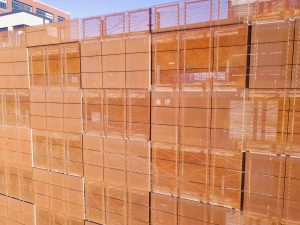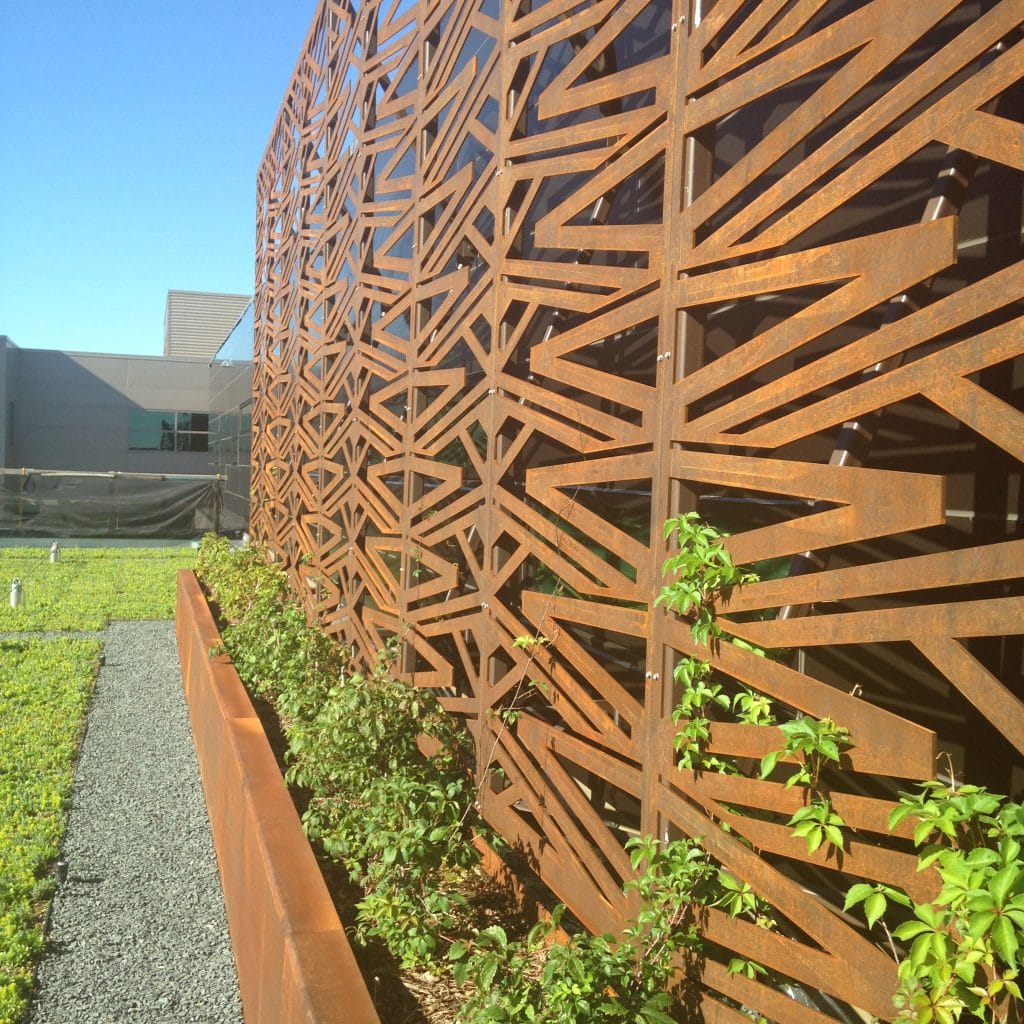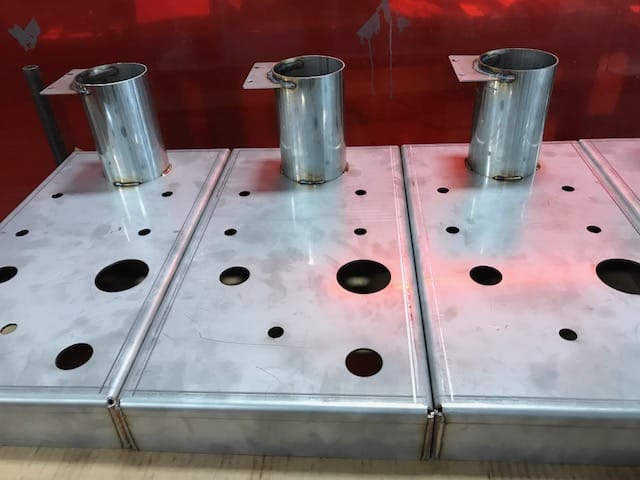Rusty Trend: Weathering Steel in Architectural Metals
Weathering steel in architectural metals provides a very strong, durable, appealing metal material that hones self-healing abilities. With its rusty orange coloring and unique look, this is something you may have come across since this is so easy to recognize.
Weathering steel is a strong copper, nickel and chromium composite metal that embraces a rustic, countryside appearance. A rust-like oxide layer (or patina) develops nicely after exposure to the elements of weather. This surface layer of rust acts as a barrier and actually protects the steel from further corrosion. Copper is the element responsible for bonding the protective oxide layer to the metal and slowing down corrosion. Even though the low amount of carbon creates the toughness, the superior corrosion properties are based on the copper and nickel content.
Engineers and architects have taken notice of this amazing architectural metal as it adorns many well-known buildings and monuments. Many call weathering steel, corten or COR-TEN® as the U.S. Steel Corporation trademarked this name. Its CORrosion resistance and TENsile strength provided the blended word to illustrates its basic powerful structure.
Applications of Weathering Steel in Architectural Metals
This attractive, nominal maintenance steel is seen in a variety of applications, including exposed steel structures. Thus, these include bridges, buildings, building façades, fences, edging, retaining walls, and architectural sculptures. The corrosion rate is so low that structures fabricated from weathering steel can achieve a 120 year design life.
Examples of Weathering Steel in custom architectural metals around the world include:
- Barclays Center sports Arena by SHoP Architects (New York)
- The Angel of the North by Antony Gormley (England)
- Matsunoyama Natural Science Museum by Tezuka Architects (Japan)
- Design Museum Holon by Ron Arad (Israel)
- Broadcasting tower in Leeds Beckett University by Feilden Clegg Bradley (England)
- Sant Pere Sacarrera Footbridge by Alfa Polaris (Spain)
- New River Gorge Bridge by Michael Baker Company (West Virginia)
Benefits of Weathering Steel
The protective rust coating continually changes and improves with age, eliminating the need for constant repainting and recoating. As a result:
- lower overall lifecycle costs (about 5% lower than conventional painted steel alternatives);
- reduced inspection cycles (reduces the need for maintenance and cleaning);
- improved safety;
- streamlined construction;
- no volatile organic compounds (VOC’s) released into the atmosphere; and
- ideal for bridges and other structures where access is difficult or dangerous;
The thickness and weight is reduced drastically because the natural-looking hardscape provides greater yield strength than low carbon steel (or mild steel). Plus, weathering steel can withstand very high temperatures. Hence, it makes a good choice of metal for chimneys, flues, and high temperature ducting, as well as custom architectural metals.
Conditions of Weathering Steel
- Weathering steel must be exposed to the elements through constant aeration. To procure the corrosion protection oxide film, a continuous wet/dry cycling is essential.
- There are environments where weathering steel should not be used, such as in the vicinity of chlorides. This is because the corrosion resistance is not capable of withstanding the conditions, like sea water (chlorides prevent the film from forming). Consequently, this can lead to premature failure.
- Weathering steel must not have other substances applied to it (e.g. paint, wax, varnish) before the passivating protective oxide film has formed and grown.
- Unless a special drainage is provided so rain can drain away, weathering steel must not be in direct contact with the ground.
Consequently, runoff from the metal can stain adjacent surfaces, such as concrete.
- The metal’s corrosion-resistance is not as great in salt air or when placed in constant contact with water.
Of course, with these fundamental conditions, weathering steel does not break or decay!
Brief History of Weathering Steel in Architectural Metals
Weathering steel was originally produced to eliminate the need for paint and maintenance on railcar wagons in 1933 by the US Steel Corp. Within a few decades, architects and engineers took interest of the unique reddish hue metal that employed amazing anti-corrosion and abrasion-resistance properties. By 1964, famous architect, Eero Saarinen, was one of the first to use the “earthy” weathering steel in architectural metals. Most noteworthy, Saarinen applied it to the interior and exterior façade of the John Deere World Headquarters building in Moline, Illinois. Today, weathering steel is in construction engineering, architecture, and of course, landscape design.
Contact Astro
This rusty trend in custom architectural metals is what’s hot! Our team at Astro is excited to start our next weathering steel project: perforated panels for a large parking ramp in Minneapolis. In fact, each perforated weathering steel panel will contain over 10,000 perforations in each panel! That’s amazing!
Contact us today to discover how we can assist you in making your next weathering steel (or any steel) project a smooth and cost-effective experience.






